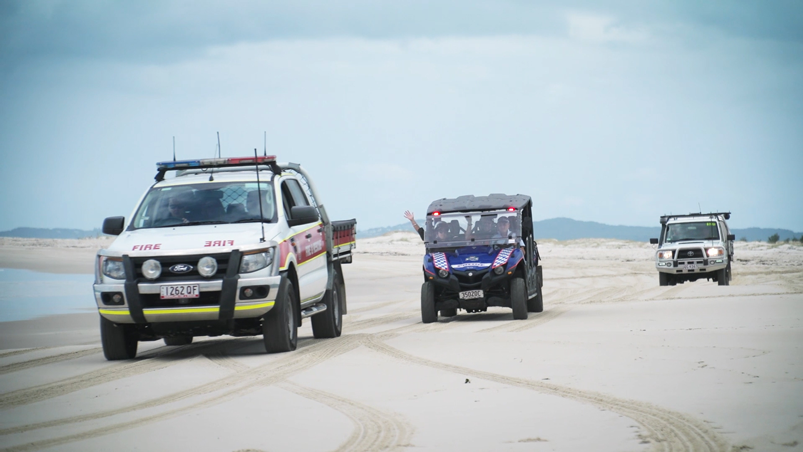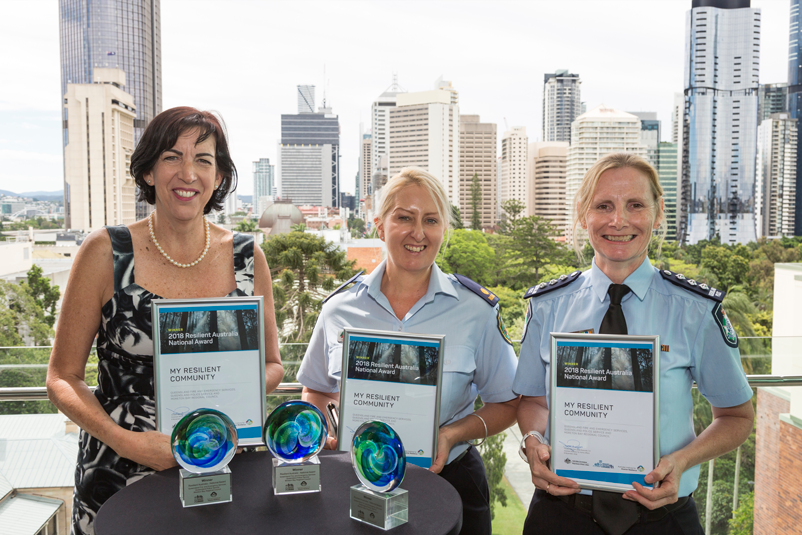If we are to build communities that thrive in the context of more frequent, severe disasters, we need to think holistically. That’s the beauty of a word like ‘resilience’; encompassing both preparedness and recovery; social networks and built environments; groups and individuals.
When applying resilience as a concept to a real-world community, it can be difficult to know where to start. That’s the beauty of the My Resilient Community project because it is a formula for non-formulaic community resilience-building.
The project is a collaboration between Queensland Fire and Emergency Services, Queensland Police Service and the Moreton Bay Regional Council that:
…delivers pathways to strengthen community resilience through improving preparedness, response and recovery capacity. Emergency services and affiliated agencies connect with communities through diverse strategies to promote understanding of risks and vulnerabilities and identify skills and contributions individuals can make to further enhance community resilience.
My Resilient Community
Queensland Fire and Emergency Service, Queensland Police Service, working on Moreton Island. Image: My Resilient Community, QFES
Practitioner approach
The spirit of the My Resilient Community is resilience done with a community, not done to a community. Before any activities are implemented, the project calls for the formation of a ‘community team’, which promotes community ownership and contributes to overall social cohesion.
Liane Henderson, a project co-founder, said, ‘We wanted it to be community-led; bringing different community groups and leaders together, thus creating a healthy community. A healthy community is a resilient community’.
The community team is also critical in the context of the resourcing shortfall for governments in the face of more frequent disasters.
‘We live in a country where there’s a lot of disasters and we’re not always going to be there. It’s important that communities are more self-sufficient and resilient where possible,’ said project co-founder, Julia Cook.
Resilient us
The community team is the vehicle for engagement that goes beyond the identification of risks. They set the priorities and project scope as well as the evaluation of strategies. In the three pilot communities of Moreton Island, Beachmere and Mount Nebo, the project team invested time in gaining a rich appreciation of the strengths in the communities, not just the problems to be solved.
Susan Trappett, project co-founder and on behalf the Moreton Bay Regional Council said, ‘We got to know the members of the community so that we could work with them to really address those weaknesses and develop those strengths as much as we could.’
This approach has allowed a greater sense of ownership and individuals can champion change in their own community.
Reflecting on the importance of challenging assumptions about vulnerability, Susan Trappett said, ‘It’s not always the elderly, it’s not always the infirm, it’s you and me— everybody can have their vulnerabilities.
‘We can do a risk assessment that can tell us whether you’re going to be susceptible to storms or fires or flood, but to know how people will react to those—you can’t know that unless you talk to the people about their experiences and what preparation they’ve undertaken and what their concerns are,’ she said.
Susan Trappett, Moreton Bay Regional Council, Liane Henderson, Queensland Fire and Emergency Services, Julia Cook, Queensland Police Service. Image: Australian Institute for Disaster Resilience
Resilient community toolkit
To date, My Resilient Community has achieved an impressive list of outcomes: a memorandum of understanding with the Department of Education establishing Beachmere State School as an equipped evacuation centre, the maintenance and promotion of the Mount Nebo Early Warning System, multi-agency doorknocking sessions and community expos, the formation of community disaster management teams and a boost in volunteering numbers.
There’s a common thread; cooperation not only between community and government, or community and emergency services, but between different departments and agencies. Organisations are working together to develop joint collateral, deliver training and share costs. This buy-in is also flowing out to local businesses.
The My Resilient Community team subsequently developed the Resilient Community Toolkit to assist the uptake of the initiative in other communities.
‘As we speak, communities to the north-west of Brisbane are using this toolkit and have brought together all different members of the community…working on all different resilience strategies and disaster management plans. They’ve taken it and they’ve run with it. Anybody could use this project,’ said Liane Henderson.




